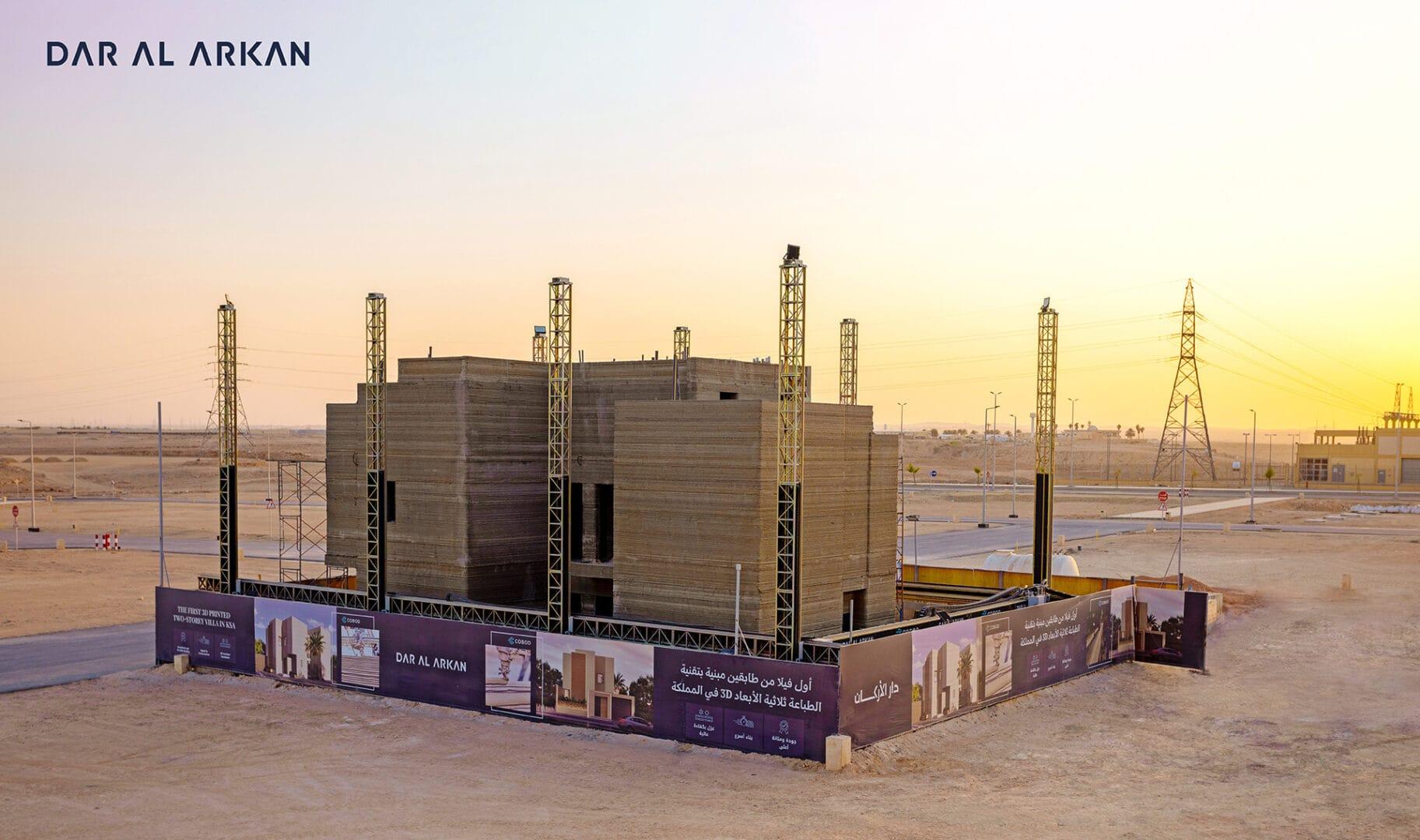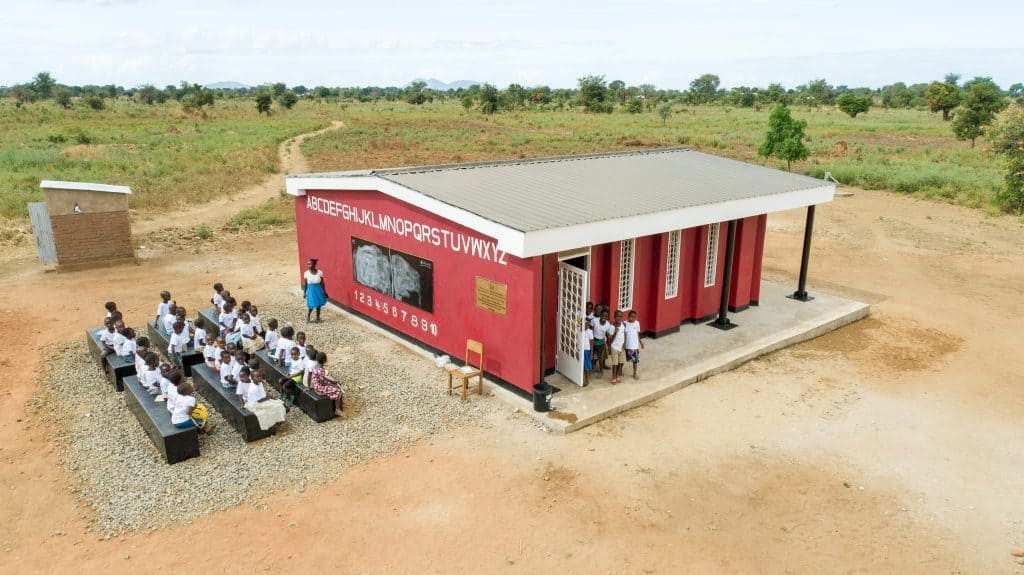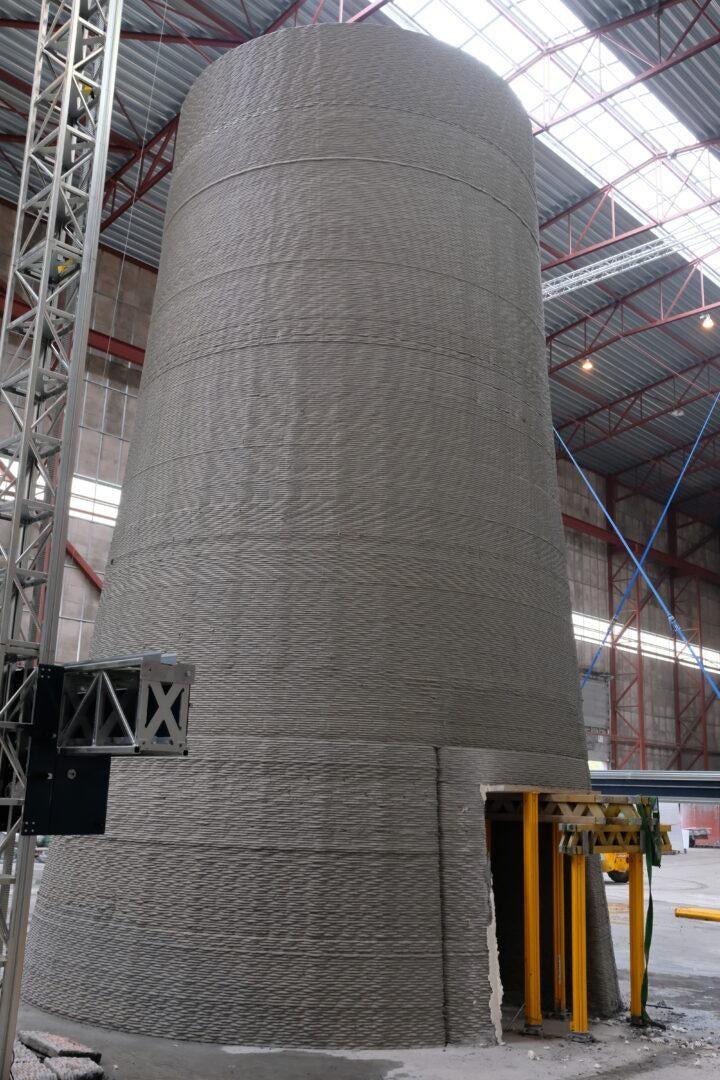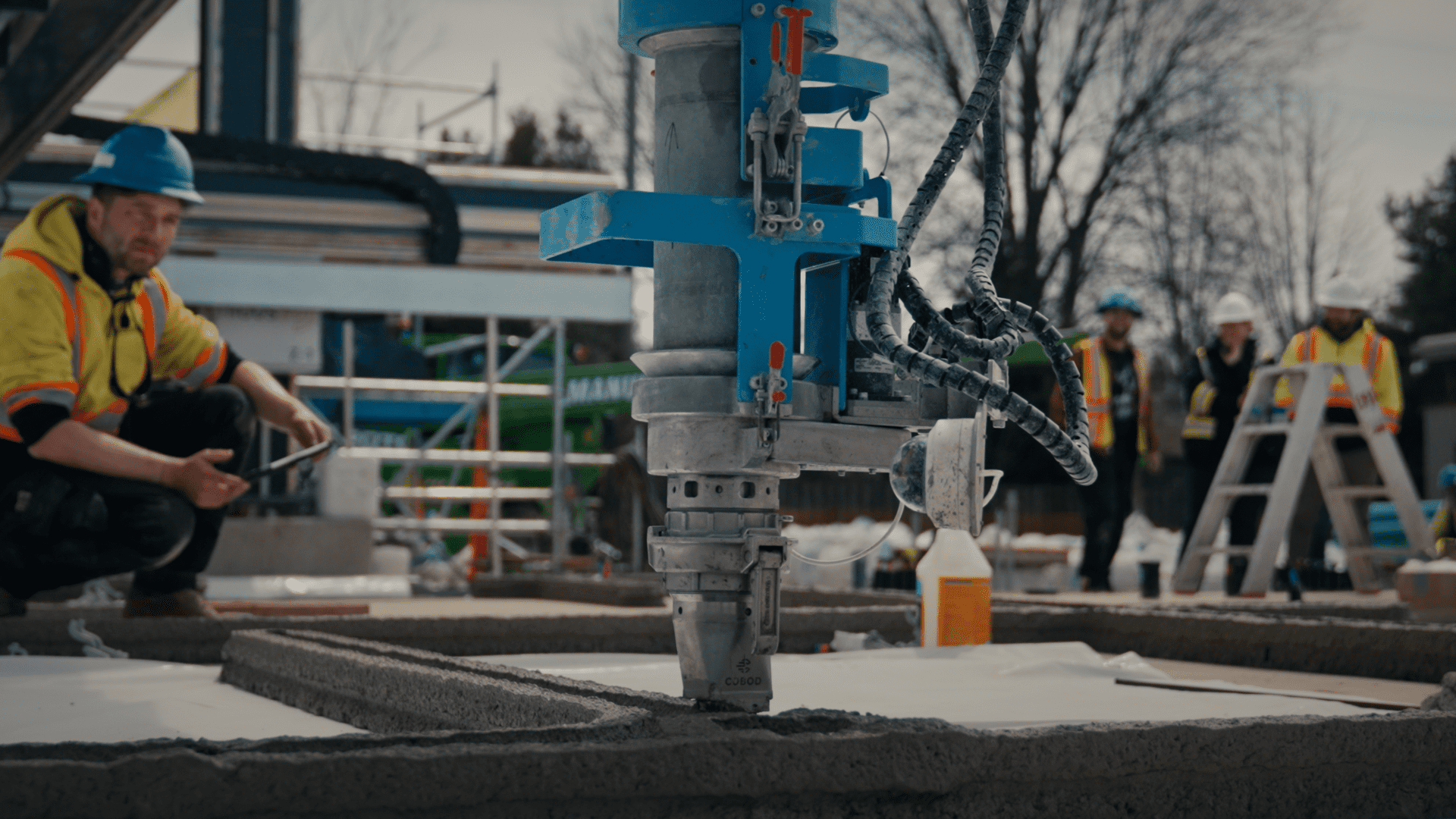To many people, additive manufacturing (AM) and 3D construction printing (3DCP) are completely different concepts. However, there is no distinction between the terms additive manufacturing and 3D construction printing. On the contrary, both terms refer to the same technology.
What is 3D construction printing (3DCP) or additive manufacturing (AM)?
3D concrete printing is defined as a cutting-edge technique that employs software to direct the arrangement of materials to construct 3D objects or structures without using conventional formwork. While additive manufacturing is most commonly defined as a process that creates a physical project from a digital design.
It is revolutionizing the way things in the construction industry are done. Construction using AM, or 3DCP, provides benefits over conventional building techniques. The procedure is largely automated, allowing for rapid completion of structural units with fewer on site personnel. To operate the printer, COBOD suggests having 3-4 people on site.
Among them should be printer operators, who will serve as the primary point of contact for the architects, and it is up to them to ensure that the printed construction matches the specified designs, materials operator and helper, who will prepare the batches and do the initial material examination, and hands-on helpers.
In contrast to conventional building techniques, 3D printing is time-efficient, cutting the amount of time needed to create a wall system from several weeks to a few days. By utilizing only what is necessary, automating the process also improves worker safety and lowers material waste.
Fact box: COBOD’s BOD2 printer prints up to 100 cm per second but currently with an average speed of 25 cm per second to consider all safety measures. The typical layer height is 4 cm and curing time of every layer is currently minimum 8 minutes. Assuming a theoretical 100% efficiency in printing and no down-time for clogging in the hose system, that makes a potential of 120 meters of print for 8 minutes while each layer cures.
With 8 minutes per layer, it could potentially print 60 layers in an 8 hour working day making a total of a 2.4 meter wall with 40mm layer height. Under perfect conditions, that would mean a one story house could be printed in one day under these conditions. The wall could cure overnight, and the building would be strong enough to start building the second story the next day.
How does additive manufacturing work?
The workflow for additive manufacturing consists of the following steps:
- A digital model of the construction is produced using computer-aided -design (CAD) software to command hardware to deposit material in exact geometric forms, layer by layer, much like with traditional 3D printing.
- G-code is created from the digital model and transmitted to the 3D printer.
- The printer is linked to a material supply system.
- After reading the G-code, the printer applies consecutive layers of the provided material.
Read more about the process of building a 3D printed construction in “A 3D printed home – what is it?”
Examples and application areas of 3DCP implementation
COBOD has since 2017 been working on projects involving the following application areas:
- Rresidential homes, such as both single, 2 and 3-story buildings up to 10 meters/ 32,8 ft
- Industrial buildings and structures, such as wind turbine towers and storage tanks
- Educational buildings, such as schools and related buildings
- Cand commercial buildings and structures since 2017 (we have more and we are proud to state that we are leaders in the 3D construction printing industry).
The tallest 3D printed building
The tallest 3D printed construction in the world was built in Saudi Arabia with COBOD’s BOD2 printer. The total height of the construction is 9,9 meters/32,5 ft, which makes it the tallest 3D printed building in the world.

The first 3D printed school
World’s first 3D printed school is built by our partners 14Trees, a CDC joint venture with Holcim. The school was constructed in Malawi, and instead of taking several days to construct using conventional building materials, its walls were printed in just 18 hours.

Wind turbine bases
COBOD and GE Renewable Energy collaborate to build record-tall wind turbine towers with 3D printed concrete bases that are optimized. Since wind turbine towers are often constructed of steel or precast concrete, their height has typically been restricted to less than 100 meters. Larger bases and more affordable, higher hybrid towers that can exceed 200 meters can be built by printing the base on-site using 3D printed concrete. Taller towers capture stronger winds, producing more electricity at a cheaper cost.

